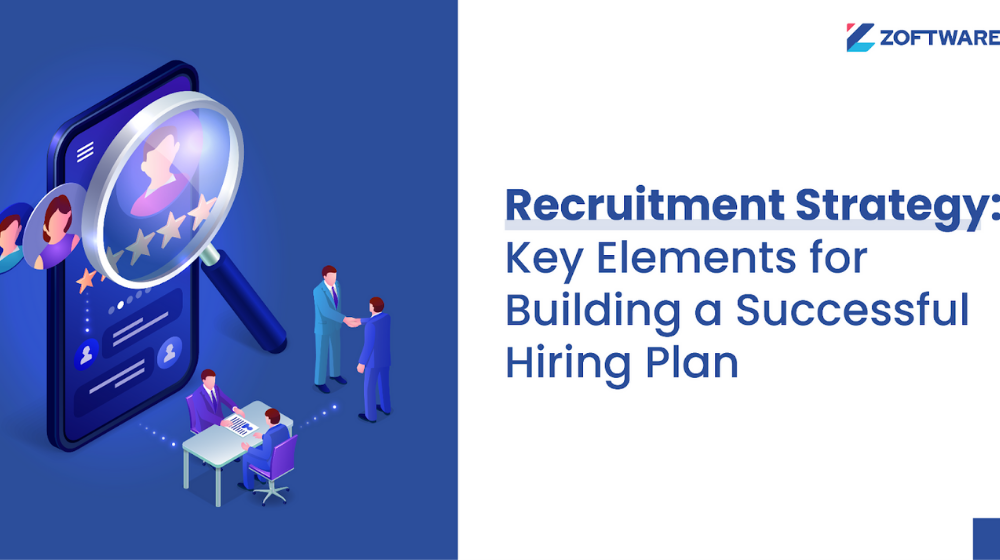Recruitment strategy is an essential aspect of any business’s HR operations.
A good recruitment strategy not only helps in hiring the right talent but also ensures that the organization’s goals and values are reflected in the recruitment process.
Understanding the recruitment process is crucial in developing an effective recruitment strategy. The recruitment process involves various stages, including job analysis, sourcing, screening, interviewing, and selecting candidates. Each stage requires a different set of skills and techniques to ensure that the organization hires the best fit for the job. Recruitment strategies are designed to optimize each stage of the recruitment process to attract and retain the best talent.
Key Takeaways
- Developing an effective recruitment strategy involves understanding the recruitment process and its various stages.
- Recruitment strategies are designed to optimize each stage of the recruitment process to attract and retain the best talent.
- Effective recruitment methods involve utilizing recruitment tools and techniques to identify and attract the best candidates.
Understanding Recruitment Process
Recruitment is a strategic process of finding, attracting, and selecting highly qualified candidates to fill open positions in a company. The recruitment process is a critical component of an organization’s success, as it ensures that the right talent is hired for the right job.
The recruitment process typically involves several steps, including job analysis, sourcing, screening, interviewing, and hiring. The job analysis step involves identifying the job requirements, including the necessary skills, knowledge, and experience required for the position.
Once the job requirements are identified, the next step is sourcing candidates. This can be done through various channels, such as job boards, social media, employee referrals, and recruiting agencies.
After sourcing candidates, the screening process begins. This involves reviewing resumes and applications to determine which candidates meet the job requirements. The screening process may also include pre-employment assessments, such as personality tests and skills tests.
The next step is interviewing candidates.
The purpose of the interview is to assess the candidate’s qualifications, fit with the company culture, and overall suitability for the position.
Finally, the hiring decision is made. This involves selecting the best candidate for the position and making an offer of employment. The hiring process may also include background checks and reference checks.
By following a structured recruitment process, organizations can ensure that they hire the best talent for their open positions.
Recruitment Strategies
Here are some of the best recruitment strategies to hire top talent:
- Define your corporate brand: When people think of places to work, they often start with the company’s brand.
- Optimize your workplace: Make sure your workplace is attractive to potential candidates. This can include everything from offering competitive salaries and benefits to creating a positive work environment.
- Actively seek out qualified individuals: Don’t wait for candidates to come to you. Instead, look for the perfect individuals.
- Consider an employee referral program: Your current employees can be a great source to get new employees. Consider implementing an employee referral program and let them refer their friends and colleagues.
- Conduct effective interviews: Once you’ve identified potential candidates, it’s important to conduct effective interviews. This can include asking the right questions, using behavioral interviewing techniques, and providing a positive candidate experience.
- Revisit silver medalist candidates: Don’t forget about candidates who were strong contenders but didn’t get the job. Revisiting these candidates can save you time and resources in the hiring process.
- Engage passive candidates: Not all top talent is actively looking for a new job. Engaging with passive candidates can help you build a pipeline of potential hires for the future.
- Consider college recruiting: If you’re looking for entry-level talent, consider recruiting from colleges and universities. This can help you find candidates who are eager to learn and grow with your company.
Effective Recruitment Methods
Recruiting the right candidates for a job is essential to the success of any organization. To ensure that the recruitment process is effective, it is important to use a variety of recruitment methods. Here are some effective recruitment methods that organizations can use to attract top talent:
- Job Posting
One of the most common methods of recruitment is job posting. This involves posting job openings on job boards, company websites, and social media platforms. Job postings should be clear, concise, and highlight the key responsibilities and qualifications.
- Recruitment Agencies
Recruitment agencies are another effective method of finding qualified candidates. These agencies specialize in finding candidates for specific industries and roles. They have access to a large pool of candidates and can help organizations find the right fit quickly.
- Job Fairs
Job fairs are events where organizations can meet potential candidates face-to-face. Job fairs can be industry-specific or open to the general public. They provide an opportunity for organizations to showcase their company culture and values and can help attract top talent.
- Internship Programs
Internship programs are an effective way to find and train future employees. Interns can be a cost-effective way to get work done while also providing valuable training and experience to future employees. Organizations can use internship programs to identify and groom potential candidates for future job openings.
Utilizing Recruitment Tools
These tools can help recruiters identify and attract top talent, as well as manage the entire recruitment process from start to finish. Here are some of the most common recruitment tools and how they can be utilized:
- Applicant Tracking Systems (ATS)
An ATS is a software application that helps manage the recruitment process by organizing resumes, tracking job postings, and managing candidate communication. An ATS can help streamline the recruitment process by reducing the amount of time spent on administrative tasks and allowing recruiters to focus on more important tasks such as interviewing candidates.
- Job Boards
Job boards are websites where employers can post job openings and candidates can search for jobs. Job boards can be general or specific to a particular industry or job type. They can be free or require payment to post job openings. Job boards can be a useful recruitment tool as they can reach a large audience of potential candidates.
- Social Media
Social media platforms such as LinkedIn, Twitter, and Facebook can be useful recruitment tools. Recruiters can use these platforms to post job openings, connect with potential candidates, and build relationships with industry professionals. Social media can also be used to promote a company’s brand and culture, which can help attract top talent.
- Video Interviewing Tools
Video interviewing tools can help recruiters conduct interviews remotely. They can also help recruiters reach candidates who may not be able to travel for an interview.
- Pre-Employment Testing Tools
Pre-employment testing tools can help recruiters assess a candidate’s skills, knowledge, and personality. These tools can include assessments, personality tests, and skills tests. Pre-employment testing tools can help ensure that candidates are a good fit for the job and the company culture.
Overall, recruitment tools can be a valuable asset to any recruitment strategy. By utilizing these tools, recruiters can save time, reduce costs, and attract top talent.
If you are looking for human resource softwares then sign up on Zoftware!





